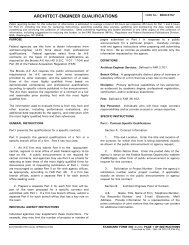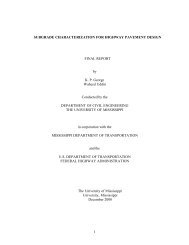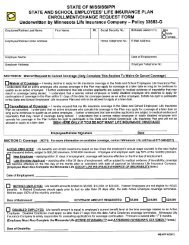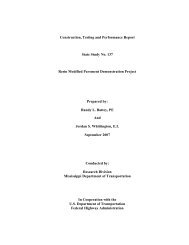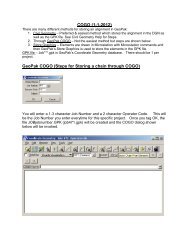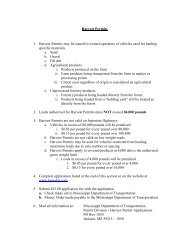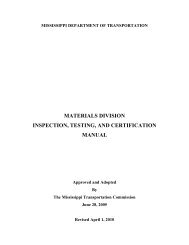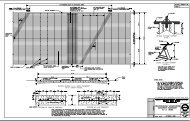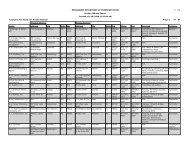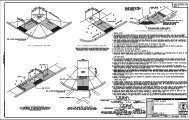State Study 111 - Polymer Modified Hot Mix Asphalt Field Trial.pdf
State Study 111 - Polymer Modified Hot Mix Asphalt Field Trial.pdf
State Study 111 - Polymer Modified Hot Mix Asphalt Field Trial.pdf
- No tags were found...
Create successful ePaper yourself
Turn your PDF publications into a flip-book with our unique Google optimized e-Paper software.
CHAPTER 5: CONCLUSIONS AND RECOMMENDATIONS<br />
CONCLUSIONS<br />
The following conclusions are based on laboratory and performance test results and on<br />
activities at the HMA plant.<br />
8. Each polymer or rubber modifier required mixing at a higher temperature than regular<br />
HMA. These temperatures ranged from 320 o to 351 o F.<br />
9. The modified HMA mixes were successfully produced in a normal HMA production<br />
facility. Most of the modifiers did not require a blending unit.<br />
10. Once the rolling pattern was established for the modified HMA, further rolling caused<br />
the rolling pattern to break off and then to peak again. Initial rolling was with a steelwheel<br />
vibratory roller and this was followed with a smaller steel-wheel static roller. (No<br />
pneumatic roller was used.)<br />
11. Comparison of laboratory acceptance tests conducted during the construction and<br />
cores taken from the pavement the next morning showed that the laboratory air voids<br />
were closer to the design air voids than the field results.<br />
12. Brookfield Viscometer tests showed that the modifiers were all more viscous at the<br />
lower temperatures.<br />
13. Results of the GTM tests showed that the laboratory specimens had sufficient shear<br />
strength to resist the stress state in the pavement and that the air voids were above the<br />
flushing level and were consistent with design values.<br />
14. Initial performance test results for the pavement test sections were low roughness and<br />
deflection readings and high skid values. These results indicate that the test sections<br />
were in an excellent initial condition.<br />
15. Results to date indicate all the modifiers are out-performing the control section, both in<br />
terms of roadway rutting and rutting in the APA. It is important to note that the rutting on<br />
the control section is still relatively small at about 0.25 inch.<br />
16. The selection of a modified asphalt binder grade based on the high temperature<br />
component of the PG designation could be quite inappropriate for a given project,<br />
especially when rubber modifiers are considered for use in the HMA.<br />
RECOMMENDATIONS<br />
1. It is obvious that all the modified binders are providing superior rutting resistance as<br />
compared to the control binder. This validates the wisdom of using modified binders for<br />
53




